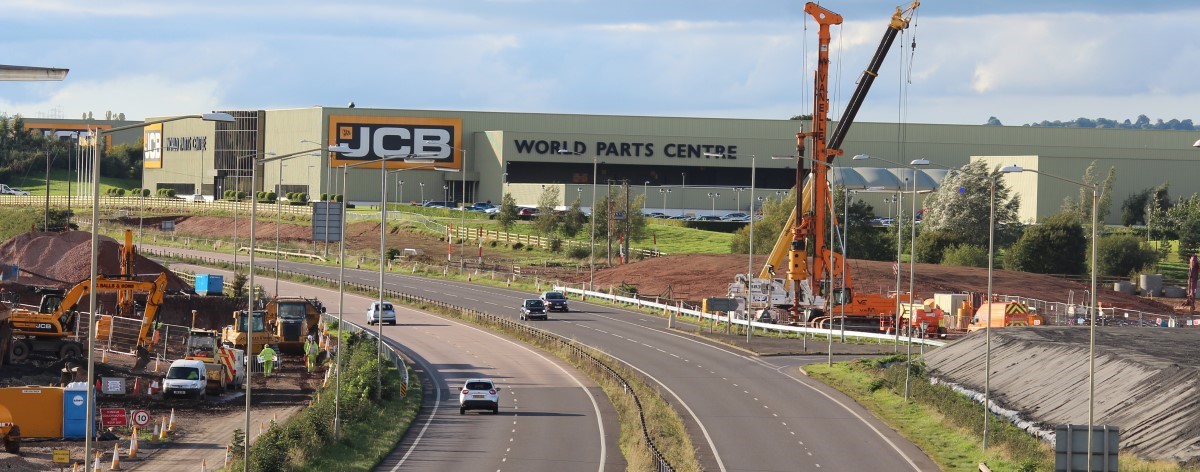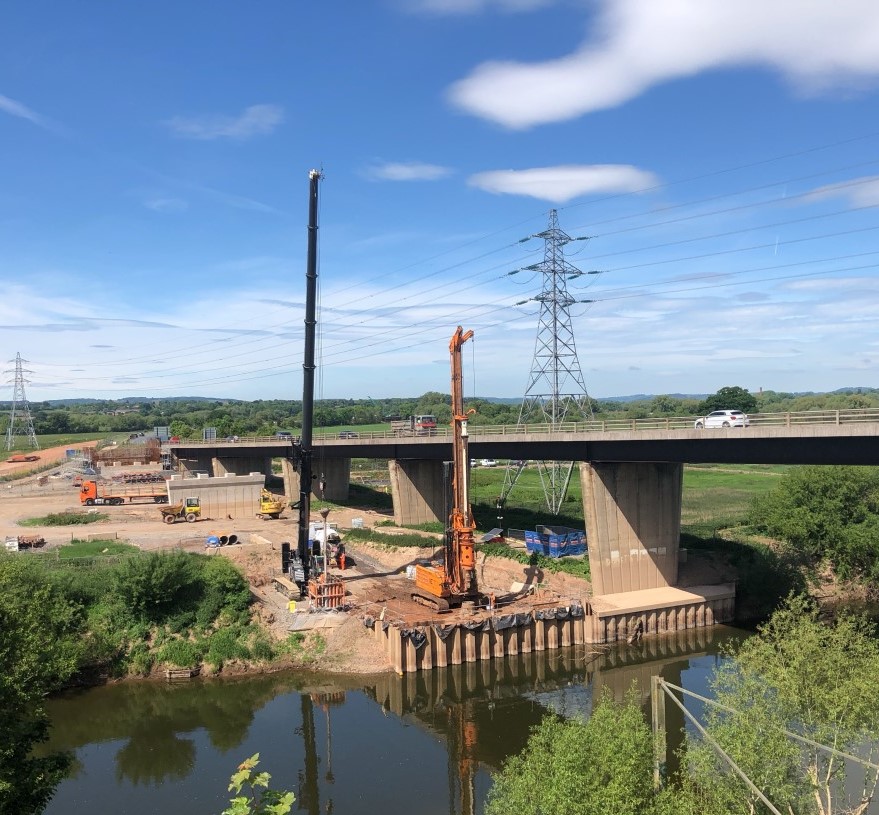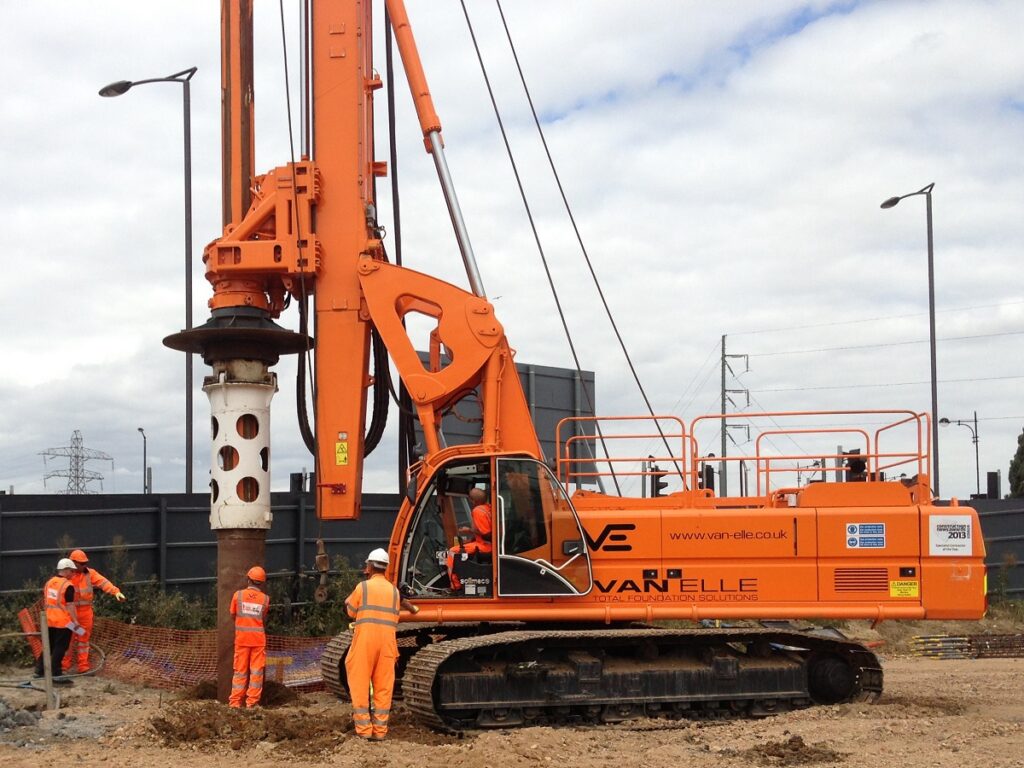Rotary bored piles are installed using specially designed digging tools to install bored piles of large diameter in highly variable and challenging ground conditions to excessive depths. They are suitable for carrying high structural loads on complex structures and are sometimes referred to as large diameter piles (LDP).
What is rotary bored piling used for?
Rotary Bored Piles are used across all sectors of the construction industry from large commercial and industrial developments to infrastructure projects like HS2 to residential developments, large basements, retaining walls to marine projects.
Bored piles are often larger in diameter than conventional continuous flight auger (CFA) piles and are used to support greater loads, overcome underground obstructions, penetrate ground too hard to bore using a continuous flight auger or create piles with a cut-off level beneath the platform level.
Using support fluids in unstable ground conditions
In locations where the ground remains unstable beyond a depth practical to use temporary casing, support fluids such as bentonite or vinyl polymers can be added to support the bore during excavation.
When the concrete is poured to form the pile, the less dense support fluid is displaced and pumped into a containment unit where it is filtered and cleaned so that it may be reused.
In majority of cases in the UK, support fluids are not necessary.
Using a super-latch cage splicing system
When prefabricated cages are required to be greater that 12m in length and need splicing together, Van Elle utilises the RCL Super-Latch splicing system.
This enables site teams to work safely and efficiently avoiding the need to place their hands inside the cage to align the bands and tighten up bolts.
Key capabilities:
- Rig loadings: 35–100 tonnes
- Pile diameter: 600–2100mm
- Maximum depth: 70m
- Working load: 400–25,000kN


